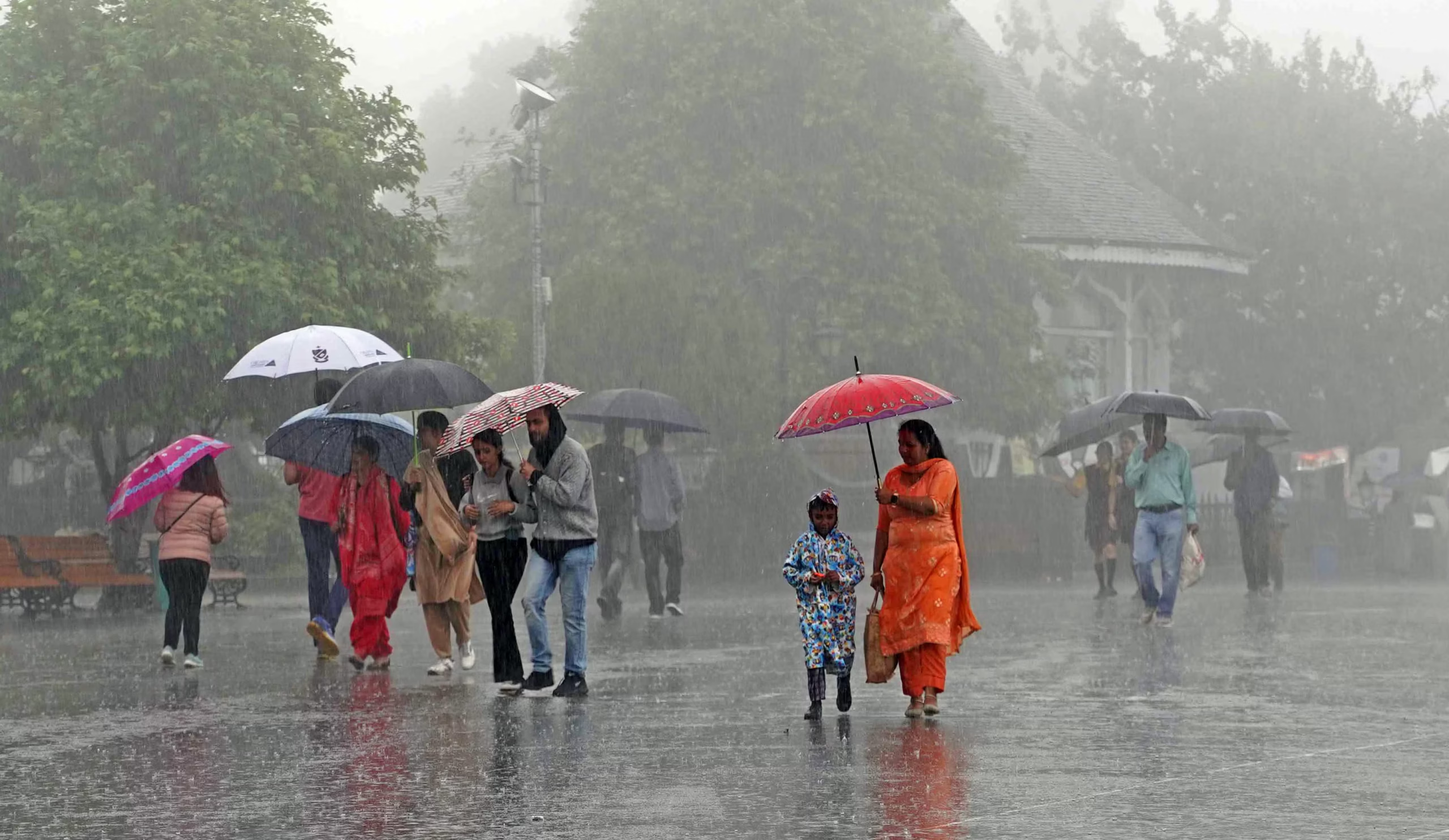The monsoon season, with its relentless rain and high humidity, transforms a lush forest into a challenging environment. While breathtakingly beautiful, a forest during monsoon season presents unique survival challenges, from staying dry and warm to navigating slippery terrain and avoiding dangerous wildlife. This guide provides essential steps and strategies to increase your chances of survival should you find yourself lost or stranded in a monsoon forest.
Monsoons are more than just heavy rain; they are seasonal changes in wind direction that bring significant shifts in precipitation. In many tropical regions, the summer monsoon brings life-giving rains crucial for agriculture, but also poses risks like flash floods and landslides. Historically, indigenous communities have adapted to and thrived in these conditions, using deep knowledge of the local flora, fauna, and weather patterns. Modern survival relies on understanding these challenges and preparing for them.
Essential Preparations Before Entering a Monsoon Forest
Prevention is always better than cure. Before you even consider entering a monsoon forest, proper preparation is paramount.
- Pack the Right Gear
Your gear is your first line of defense against the elements. Focus on waterproof and quick-drying items.
- Shelter: A lightweight, durable tarp or a hammock with an integrated rainfly is ideal. Tents can be heavy and difficult to dry.
- Rainwear: A good rain jacket and rain pants are non-negotiable. Look for breathable materials to prevent excessive sweating, which can lead to hypothermia. A poncho can also serve as both rain gear and a makeshift shelter.
- Footwear: Waterproof hiking boots with excellent grip are crucial for slippery, muddy terrain. Consider bringing gaiters to prevent water and debris from entering your boots. Some experienced trekkers even opt for quick-drying sandals for comfort while in camp, keeping their boots dry for hiking.
- Clothing: Prioritize quick-drying synthetic fabrics or wool. Cotton absorbs and holds moisture, making you cold and prone to chafing. Pack multiple layers to regulate body temperature. Always have a dedicated set of dry clothes stored in a waterproof bag for sleeping.
- Navigation Tools: A map and compass are essential. GPS devices or smartphones can fail due to water damage or lack of signal.
- Fire Starters: Waterproof matches, a lighter, a ferro rod, and waterproof tinder (like cotton balls soaked in petroleum jelly or commercial fire starters) are vital.
- First-Aid Kit: A comprehensive kit including bandages, antiseptic wipes, pain relievers, anti-diarrhea medication, insect repellent, and any personal medications.
- Water Purification: A water filter or purification tablets are crucial for safe drinking water.
- Lighting: A headlamp or flashlight with extra batteries.
- Communication: A fully charged power bank, and if possible, a satellite phone or personal locator beacon (PLB) for emergencies.
- Food: High-energy, non-perishable food items.
- Inform Someone of Your Plans
Always tell a reliable person your itinerary, including your entry and exit points, and your expected return time. This is critical for search and rescue efforts if something goes wrong.
Staying Dry and Warm
The biggest challenge in a monsoon forest is combating constant dampness and the risk of hypothermia.
- Build a Reliable Shelter
A good shelter provides protection from rain, wind, and insects, and helps conserve body heat.
- Location Selection:
- Find a spot on higher ground to avoid flash floods and standing water.
- Look for a natural overhang, large fallen tree, or dense tree canopy for initial protection.
- Avoid setting up camp directly under large, overhanging branches that could fall during heavy winds.
- Tarp Shelter (Lean-to or A-frame):
- Use your tarp to create a lean-to against a sturdy tree or an A-frame structure using a ridgeline between two trees.
- Ensure the tarp is angled steeply to allow water to run off easily.
- Dig a small trench around the perimeter of your shelter to divert water.
- Raise your sleeping area off the wet ground using a hammock, a bed of dry leaves, or a makeshift platform of branches.
- Natural Shelters: If you don’t have a tarp, look for dense evergreen trees or rock overhangs. Enhance these with leaves, ferns, or branches for added insulation and waterproofing.
- Master Fire Starting in Wet Conditions
Starting a fire in a monsoon forest is incredibly challenging but essential for warmth, drying clothes, boiling water, and signaling.
- Gather Materials Strategically:
- Look for standing deadwood or branches still attached to trees but without leaves. The inner wood of these is often drier.
- Check under dense canopies or large fallen logs that are off the ground for drier kindling and tinder.
- Feather sticks (thin shavings of wood from the dry interior of branches) are excellent.
- Collect resinous wood (like pine fatwood) or birch bark, which burn well even when damp due to their oils.
- Prepare Your Fire Lay:
- Find a sheltered spot, ideally under an overhang or create a small “fire umbrella” with a larger piece of bark or a tarp.
- Build a raised platform for your fire using rocks or larger logs to keep it off the wet ground.
- Start with very fine, dry tinder.
- Gradually add progressively larger pieces of kindling. Don’t smother the flame with too much wood at once.
- Utilize Fire Starters: Your waterproof matches, lighter, or ferro rod are your primary tools. Commercial fire starters or homemade alternatives like petroleum jelly-soaked cotton balls will significantly increase your chances of success.
- Keep Clothing Dry
This is a continuous battle.
- Always have a dedicated set of dry sleep clothes stored in a waterproof dry bag. Change into these only when you are in your shelter and ready to sleep.
- Hang wet clothes to dry near your fire, but not so close they scorch.
- Accept that your “outer” layers may remain damp during the day. Focus on keeping your core body temperature up.
Finding and Purifying Water
Even though it’s raining, finding safe drinking water is crucial. Rainwater is generally safe, but ground sources can be contaminated.
- Collect Rainwater
This is your safest and most reliable source.
- Use your tarp to collect rainwater by creating a depression or funneling it into a container.
- Tie a plastic bag around a leafy branch; as the plant transpires, condensation will collect in the bag.
- Look for large leaves (e.g., banana leaves) that can be shaped into funnels.
- Locate Ground Water Sources
- Follow the natural contours of the land downhill; water tends to collect in valleys and depressions.
- Look for flowing streams. While seemingly clean, all surface water should be treated. Avoid stagnant pools.
- Bamboo stalks can sometimes hold rainwater in their segments.
- Purify All Water
Never drink untreated water from the forest, especially during monsoon, as it can contain harmful bacteria, viruses, and parasites leading to waterborne diseases like giardiasis or dysentery.
- Boiling: This is the most effective method. Bring water to a rolling boil for at least one minute.
- Water Filter: Portable water filters can remove bacteria and protozoa. Ensure your filter is designed for the specific contaminants present in natural water sources.
- Purification Tablets: Chemical tablets (iodine or chlorine dioxide) can kill most pathogens. Follow the instructions carefully.
Sourcing Food
Food is less immediate than water and shelter, but important for long-term survival. Foraging in a monsoon forest requires extreme caution due to many poisonous look-alikes.
- Foraging – Exercise Extreme Caution
- The Universal Edibility Test: If you must forage, perform the Universal Edibility Test. This is a slow, multi-step process involving skin contact, small taste tests, and waiting periods to check for adverse reactions. It is not foolproof but can reduce risk.
- Known Edibles: Only consume plants you can 100% positively identify as edible. Examples include certain types of berries (if you know them), young leaves of specific plants, inner bark of some trees (like pine or birch, which also offer Vitamin C), and certain fungi (though fungi identification is notoriously difficult and risky).
- Avoid Unknowns: Do not eat anything you are unsure about. Many poisonous plants resemble edible ones.
- Observe Animals: While not a guarantee, observing what animals eat might provide clues, but animals have different digestive systems than humans.
- Fishing and Trapping
- Fishing: Look for streams or calmer pools. Improvised fishing hooks can be made from thorns or bone, and line from plant fibers.
- Trapping: Simple snares can be set up for small game, but these require knowledge and practice. Ensure you understand local regulations and ethical considerations for trapping, even in a survival scenario.
Navigation and Safety
Navigating a monsoon forest can be disorienting due to thick canopy, constant rain, and obscured landmarks.
- Stick to a Plan
- If lost, stay calm. Use the STOP method: Stop, Think, Observe, Plan.
- If you know a general direction to a trail or river, try to stick to a consistent bearing using your compass.
- Follow streams downhill: Streams often lead to larger bodies of water or human settlements. However, be wary of flash floods and strong currents during heavy rain.
- Utilize Natural Navigation
- Sun and Clouds: Even on cloudy days, you might discern the general direction of the sun’s movement. In the Northern Hemisphere, the sun is generally in the south at midday.
- Moss on Trees: While not entirely reliable, moss often grows more thickly on the shadier (typically north) side of trees in temperate forests. In tropical monsoon forests, this can be less consistent due to overall high humidity.
- Animal Trails: Animal trails can lead to water sources or easier terrain, but they may not always go in your desired direction. Use them with caution.
- Be Aware of Dangers
The monsoon season amplifies several forest dangers:
- Flash Floods: Heavy rains can quickly swell rivers and streams. Avoid crossing rapidly moving water. If you must cross, use a sturdy stick for balance and face upstream.
- Landslides and Mudslides: Saturated soil increases the risk. Avoid steep slopes, especially after prolonged rain.
- Slippery Terrain: Rocks, roots, and muddy paths become extremely slippery. Move slowly and deliberately. Use a sturdy stick as a walking aid.
- Leeches: Common in humid environments, especially after rain. Carry salt or a small flame to remove them, or use insect repellent.
- Snakes and Insects: Many reptiles and insects become more active during monsoon. Snakes seek higher ground, sometimes entering shelters. Always check your surroundings, clothes, and gear. Wear long sleeves and pants. Use insect repellent to ward off mosquitoes (which carry diseases like malaria and dengue) and other biting insects.
- Falling Branches/Trees: High winds combined with saturated soil can cause trees or branches to fall. Avoid setting up camp under dead or weakened trees.
Signaling for Help
If you are lost, signaling for help is a priority.
- Fire/Smoke: A signal fire, especially with wet leaves to produce more smoke, can be seen from afar.
- Whistle: Three short blasts repeated is a universal distress signal.
- Reflective Material: Use a mirror or shiny object to reflect sunlight (if available) towards aircraft or open areas.
- Bright Clothing: Wear bright colors to increase visibility.
Surviving in a monsoon forest is a test of resilience, knowledge, and adaptability. By understanding the unique challenges of the season and applying these practical survival techniques, you can significantly increase your chances of staying safe and making it out.
FAQ: Surviving in a Monsoon Forest
Q1: What are the biggest dangers of a monsoon forest?
The biggest dangers in a monsoon forest are hypothermia from constant wetness and cold, flash floods, landslides, highly slippery terrain, and increased activity of snakes and insects (especially mosquitoes carrying diseases).
Q2: How do I keep my clothes dry during the monsoon in a forest?
The best way to keep your clothes dry is to wear quick-drying synthetic or wool fabrics, and to always carry a dedicated set of dry clothes (especially for sleeping) sealed in a waterproof dry bag. Hang wet clothes to dry whenever possible, ideally near a fire.
Q3: Is it safe to drink rainwater directly from a collection point in the forest?
Generally, rainwater collected directly (without touching ground or contaminated surfaces) is the safest natural water source in a survival situation. However, if there’s any doubt about airborne pollutants or the cleanliness of your collection surface, it’s always best to purify it by boiling, filtering, or using purification tablets.
Q4: What’s the best type of shelter to build in a monsoon forest?
A lightweight tarp used to create a lean-to or A-frame shelter is highly effective. Ensure it’s on higher ground, angled steeply for water runoff, and that your sleeping area is raised off the wet ground to prevent hypothermia. Natural overhangs can also be enhanced.
Q5: How can I start a fire in very wet conditions during the monsoon?
Starting a fire in wet conditions is challenging. Focus on finding dry tinder and kindling by looking for standing deadwood, under dense canopies, or the inside of split logs. Use resinous wood like fatwood. Prepare a raised fire platform and use reliable fire starters like a ferro rod with waterproof tinder (e.g., petroleum jelly-soaked cotton balls).
Q6: What animals should I be most careful of during the monsoon season in a forest?
During monsoon, snakes are more active and may seek higher, drier ground, potentially entering shelters. Leeches are also prevalent in wet environments. Additionally, mosquitoes are a significant concern as they can transmit diseases like malaria and dengue fever. Always check your surroundings and use insect repellent.
Q7: Is it safe to forage for food in a monsoon forest?
Foraging for food in a forest, especially during monsoon, is extremely risky due to the high number of poisonous plants that resemble edible ones. Only consume plants you can 100% positively identify. If you must forage, use the Universal Edibility Test with extreme caution, but prioritize other food sources or signaling for rescue.






